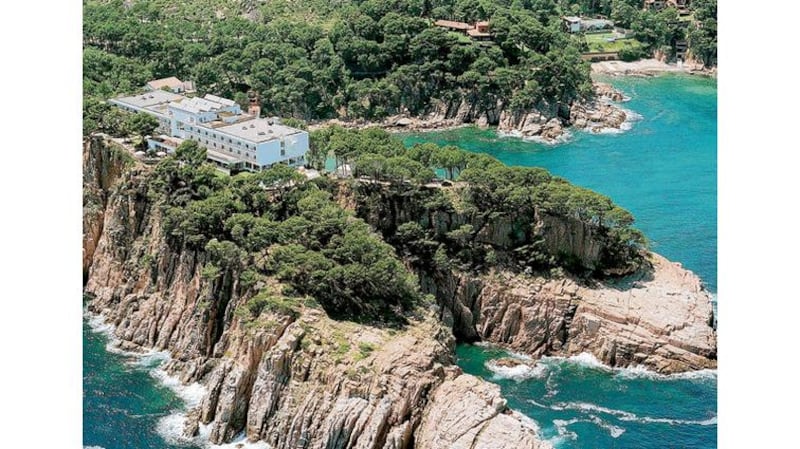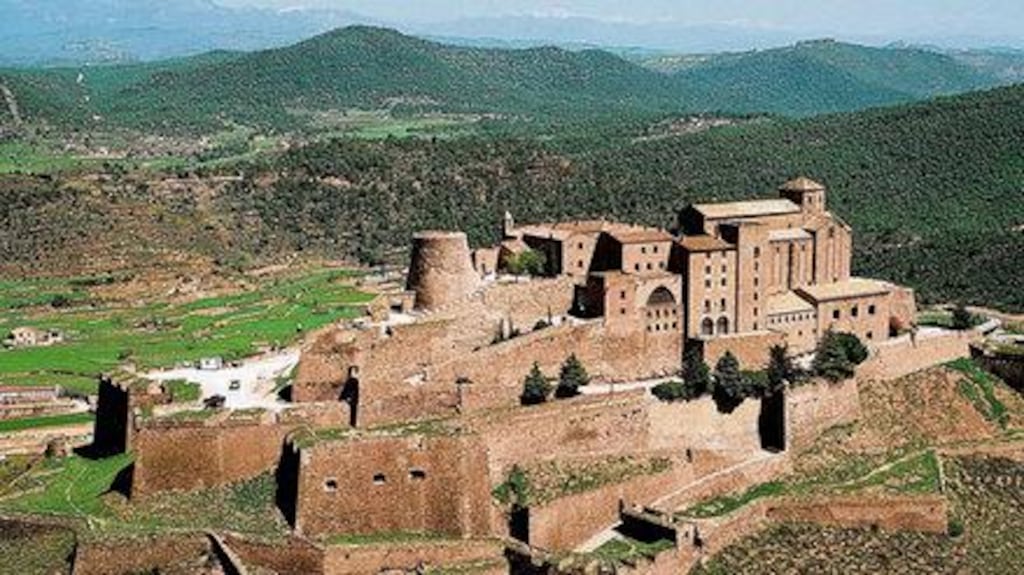The foreboding Castle of Carmona, surrounded by the fertile plains of Seville, was once home to Pedro the Cruel, 14th century King of Castile. You needed to work pretty hard to earn yourself a stand-alone title for cruelty in medieval Spain – this was a land renowned for violence, intimidation and general skullduggery. However, Pedro’s reputation seems well-deserved; his business was conducted with an imaginative vindictiveness that impressed even his most savage contemporaries.
Hassle at the castle was a regular feature, including one episode that may have you nodding thoughtfully. During Pedro’s reign, a visiting Arab dignitary was foolish enough to rock up to Carmona wearing what was the largest ruby in the known world. Mistake. Pedro had him murdered and nicked the ring, subsequently presenting it to his pal Edward the Black Prince. Eventually, the gem became part of the British Crown Jewels, wheeled out to this day on British state occasions.
The site of this dark deed, the Castle of Carmona, is today a Parador Hotel. Needless to say, the ghosts of its clamorous past are now silent; the castle slumbers on peacefully in its hillside fastness.

Today guests at Carmona are treated to lavish comfort and gracious living, with nary a worry about the security of their bling. The Parador Hotels of Spain, or Los Paradores de Turismo de España as they like to call themselves on formal occasions, are a chain of Spanish luxury hotels founded by Alfonso XIII in 1928 to promote tourism. The first opened in Gredos, Ávila, and they remain a state-run enterprise, occupying former castles, palaces, fortresses, convents, monasteries and stately homes. To tour Spain via these hotels is to come face-to-face with this country’s long, and seldom mundane, history.
It’s an odd concept, really – a government running hotels. You can’t really imagine, say, an Enda and Eamon-run BB, never mind a whole chain of luxury hotels. But in Spain it works well – and why wouldn’t it? This is, after all, a nation with the best roads in Europe, with constitutionally guaranteed naps in the afternoon, and the best nibbles ever invented – tapas. Okay, part of the country wants to have nothing more to do with the rest of the Spain – in fact the part we were travelling through, Catalonia, but hey, those of us from Co Down are used to a spot of rancour.
Our visit began at a former ninth century castle, the Parador Cardona in the province of Barcelona. Its former inhabitants could speak of handbags with Charlemagne the Great, William the Hairy, Almursur the Moor, and of course Pablo the Lacking Any Single Stand-Out Characteristic. Manu, our driver, turned out to be a constant source of offbeat information. (And in case you're wondering – hiring a man and a Merc isn't as wantonly extravagant as you might think for a group of people, see blailimousines.com.)
Within Cardona Castle’s walls history stretches back ever further – the second century tower tells a tale of forlorn love. Adeles, the daughter of the duke, was held captive by her brothers after falling in love with a Moor. Incarcerated for a year, she died of a broken heart. Needless to say, her sobs can be still be heard when the moonlight falls across the ancient tower.
The castle offers its own spiritual space: the 12th century church of San Vicente abuts the ground floor tapas bar. If, on the other hand, you’re more into matters sybaritic, then welcome. Traditional luxury and comfort go hand in hand in this stylish bolt-hole.
The medieval-style restaurant serves hearty Catalan specialities – local sausages, spicy spinach, steak and venison, cider cakes: food fit for a king. Even a particularly cruel one. But then that’s what Paradors are about – combining vernacular cuisine and culture with more than a touch of modern panache. The service here is friendly and free-wheeling. “More wine, señor?” our waiter would say at very regular intervals. As it happens, more wine is one of my very favourite things, so despite Cardona having few similarities to Co Down – it wasn’t long before I felt utterly at home.
Slightly worse for wear the next morning, we piled into the Mercedes. Manu, looking immaculate – even though we’d spotted him downstairs very late on, and we don’t think he was heading for church – informed us that our next destination was in deeply rural Osona.
The Vic-Sau Parador, a converted Catalan farmhouse, combines rustic charm with an extravagant panorama stretching as far as the snow-capped Pyrenees. Behind are the Guillerias Mountains, in front the Sau reservoir. The area is home to dozens of avian A-listers, including black-shouldered kites, Eurasian spoonbills and Griffon vultures.
Nearby are walks that take you ever further along the byways of Spanish history. Not three miles from the Parador is the Monastery of Casserres, built on the teetering edge of a cliff – truly a triumph of stonemasonry over common sense. After touring this Romanesque marvel, you can enjoy a glass of the local Catalan garnacha wine (rich and red) in the tapas bar while taking in the jaw-dropping view across the gorge of Sau. The monastery, founded in 981, was completed in 1006. The abbot in charge passed away peacefully in his bed – back in the days when dying in your bed was no insignificant achievement.
We asked our laid-back guide if the 1,000th anniversary had been marked in great style. “Er, no,” he replied. (I think I caught Manu smirking in the background). “Sadly, the local council didn’t realise, somehow, about 1006. Who knows, eh? More wine, señor? Anyway we’re planning a huge celebration in 2016 – the 1010th anniversary.” Sometimes I really love Spain.
Our next stop was the coast. The Parador Hotel Aiguablava on the Punta D’es Muts, is set high above what I am obliged to call through long-established convention, the turquoise waters of the Mediterranean. The hotel literature says it stands “on a promontory jutting into the sea” and I for one would have been most disappointed to arrive on a promontory and find there was no jutting to be had. But this one was as good as its word, with stunning maritime views in all directions.
Because of its location, seafood is naturally a big thing here – and oddly enough, served with chips. Actually, not that odd: just like tapas, siestas and chorizos, chips are a Spanish invention. The first fish and chip shop in Britain opened in the mid 19th century – Britain (and Ireland) had hitherto been chipless. Sephardic Jews brought chips with them from Spain, where a tradition of deep frying stretches back to antiquity. Except, of course, Spanish frying is done in the very best of olive oil.
Today, many boutique, luxury hotels have become destinations in their own right, but are often isolated from the local community. Not so with the Paradors. Typically situated in the hidden corners of Spain, the hotels are integral to the locality, and many have been for hundreds of years. You’ll be pampered and cosseted, of course, but you’ll also experience España verdad – the real Spain.
* For more information on Parador Hotels see maptravel.ie, tel: 01-8783117














